#mallory and irvine
Explore tagged Tumblr posts
Text
Speaking of guys who disappeared into the extremely inhospitable cold ages ago, NOW IRVINE'S FOOT
#what a time to be alive#huge couple weeks for dead explorers#and their fans#everest#mallory and irvine#love frozen dead guys#james fitzjames#the terror
21 notes
·
View notes
Text
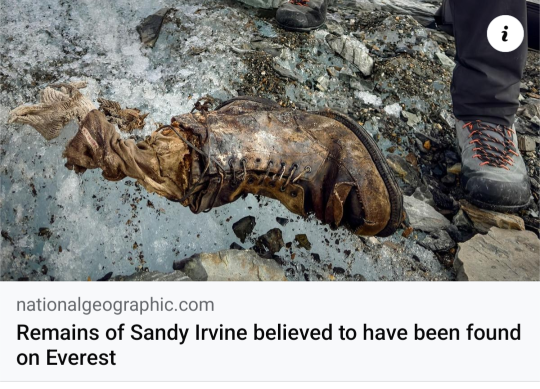
Folks found a foot.
#sandy irvine#mallory and irvine#mount everest#british people that died doing something stupid#1920s#national geographic#follow the shoe!#george mallory#mountain climbing
10 notes
·
View notes
Text

'AT about lunchtime on June 8, 1924, Noel Odell was at more than 26,000ft on Everest, climbing in support of George Mallory and Andrew Irvine. It was a calm but cloudy day, and the Northeast Ridge was wreathed in mist. At 12.50pm, there was a break in the cloud and Odell noted in his diary: “Saw M & I on the ridge nearing the base of the final pyramid.”
'Odell would later elaborate: “I noticed far away on the snow slope leading up to what seemed to me to be the last but one step from the base of the final pyramid, a tiny object moving and approaching the rock step. A second object followed, and then the first climbed to the top of the step.” As the cloud thickened, it was the last time they were seen alive: the mystery of Mallory and Irvine was born.'
Country Life, May 2024.
5 notes
·
View notes
Text
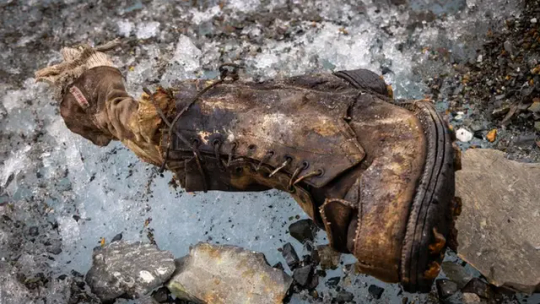
Remains of Andrew 'Sandy' Irvine Who Vanished in 1924 Found on Mount Everest
The foot, boot and sock thought to belong to Sandy Irvine, who disappeared during George Mallory's 1924 expedition to climb Mount Everest, have likely been found. They could be a vital clue in unraveling an even bigger mystery.
Remains believed to belong to a British explorer who vanished more than 100 years ago while climbing Mount Everest have finally been found.
Andrew Comyn "Sandy" Irvine, aged 22, disappeared along with the mountaineer George Mallory in June 1924. The pair were attempting to become the first people to scale the world's highest peak.
It's still a mystery whether they succeeded in their goal before they died. Mallory's remains were discovered in 1999, which were missing a photograph of his wife that the climber had planned to leave on the summit. Irving, who had been carrying a Kodak camera that may have recorded a possible historic summit, was never recovered. The summit was officially first reached 29 years later, when Edmund Hillary and Tenzing Norgay scaled Everest from its south side in 1953.
Now, a National Geographic documentary team, including the Oscar-winning director Jimmy Chin and the climbers and filmmakers Erich Roepke and Mark Fisher, have found what they believe is Irvine's foot.
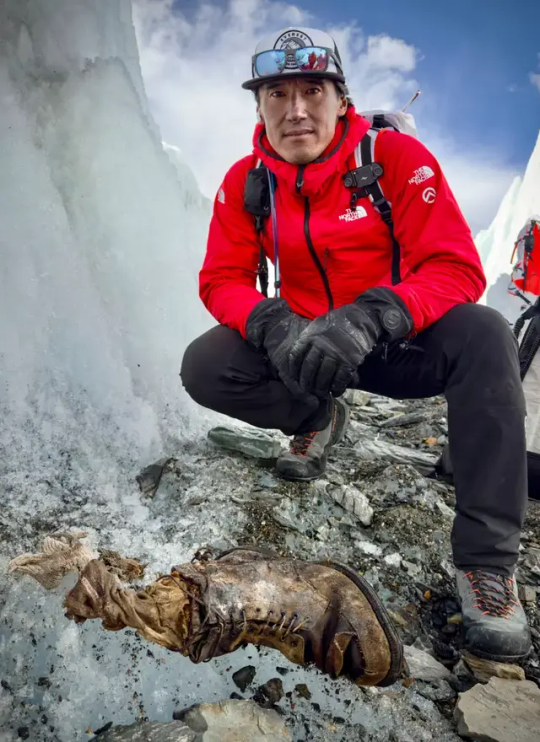
Encased in a boot and wearing a sock stitched with his name, the foot was discovered on Everest's Central Rongbuk Glacier, further down the mountain from Mallory's remains.
"I lifted up the sock," Chin told National Geographic, "and there's a red label that has A.C. IRVINE stitched into it."
Irvine and Mallory were last seen on June 8, 1924, as they set off to scale the summit. One of their expedition teammates, Noel Odell, reported spotting the two near the second of the mountain's three steps as two tiny black dots. One of the dots broke past the skyline during a brief parting of the clouds, then they disappeared.
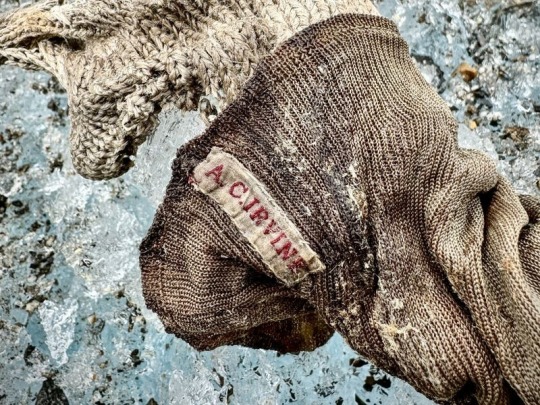
Mallory's body was found less than 2,000 feet (600 meters) from the summit by the U.S. rock climber Conrad Anker. Mallory's remains were tied by a rope around the waist and had injuries suggesting that the pair had fallen while connected together.
By searching near these remains and scouring the glacier for clues, Chin and his team located the boot melting out of the ice.
"This was a monumental and emotional moment for us and our entire team on the ground, and we just hope this can finally bring peace of mind to his relatives and the climbing world at large," Chin said.
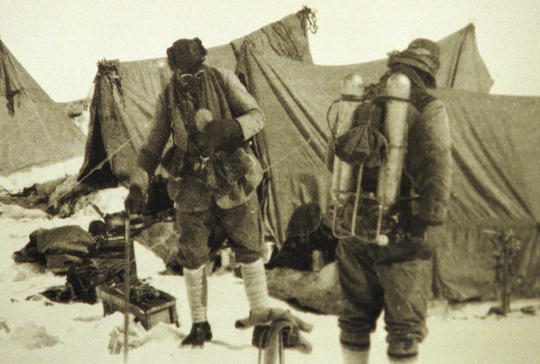
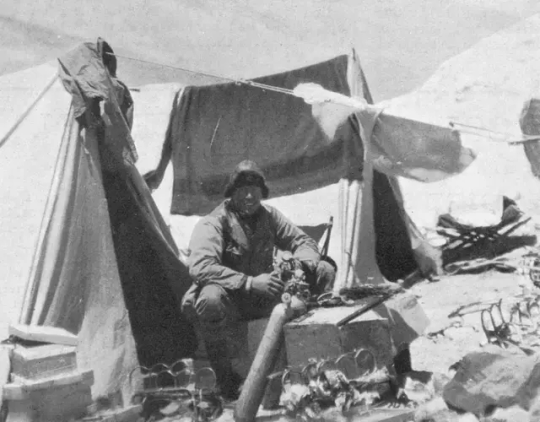

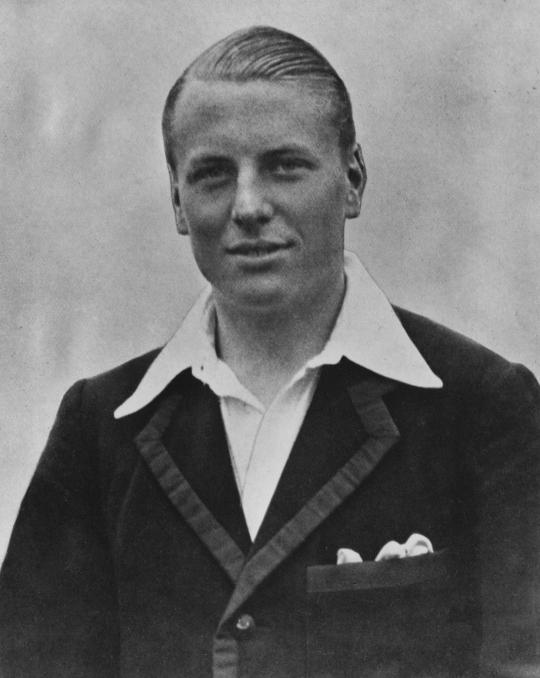
The team sent the remains to China Tibet Mountaineering Association, which is responsible for climbing permits on Everest's northern side. The find was also reported to the Royal Geographical Society, which organized Irvine and Mallory's expedition, and Irvine's great niece and biographer, Julie Summers.
"I have lived with this story since I was a 7-year-old when my father told us about the mystery of Uncle Sandy on Everest," Summers said, as reported by the Guardian. "When Jimmy told me that he saw the name AC Irvine on the label on the sock inside the boot, I found myself moved to tears. It was and will remain an extraordinary and poignant moment."
The Irvine family has volunteered to take a DNA test so that the identity of the remains can be conclusively determined. Meanwhile, Chin and his team will continue to search for more artifacts. If Irvine's camera is found and it can prove they scaled the peak, it could potentially rewrite history.
By Ben Turner.

#Mt. Everest#Mount Everest#Sandy Irvine#Remains of Andrew 'Sandy' Irvine Who Vanished in 1924 Found on Mount Everest#George Mallory#1924 British Mount Everest expedition#mountain climbing#archeology#archeolgst#history#history news
166 notes
·
View notes
Text
Between James Fitzjames and Sandy Irvine, autumn 2024 is really the season of finding centuries-old missing explorers in very cold places
#Sandy Irvine#George Mallory#James Fitzjames#the terror#mount everest#mt. Everest#the franklin expedition#a word of warning:#EVERY SINGLE ARTICLE about Irvine has a photo of his severed foot#like I genuinely can’t find any without it#so just be warned#be careful when Googling
37 notes
·
View notes
Text
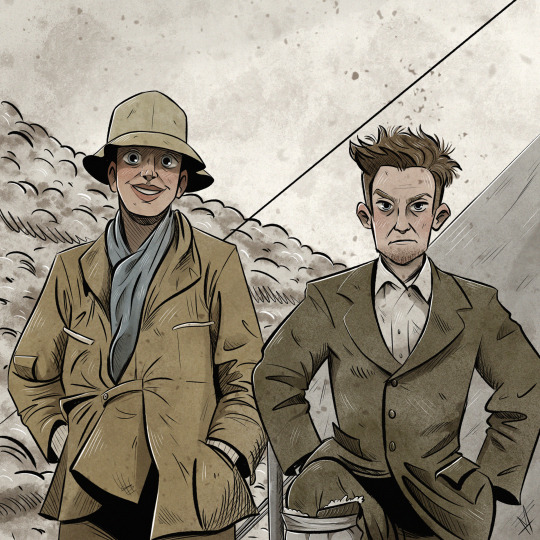

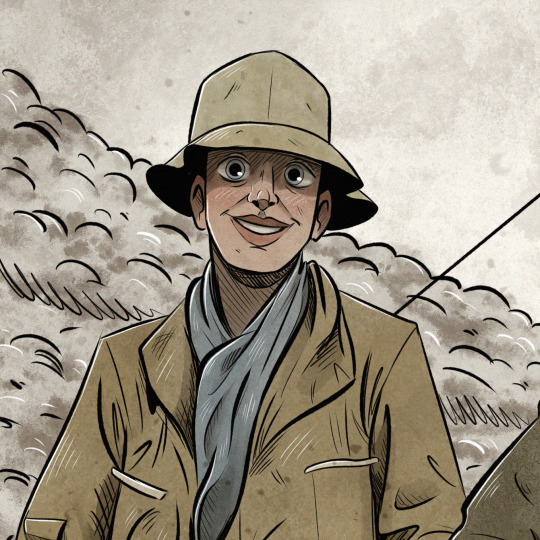
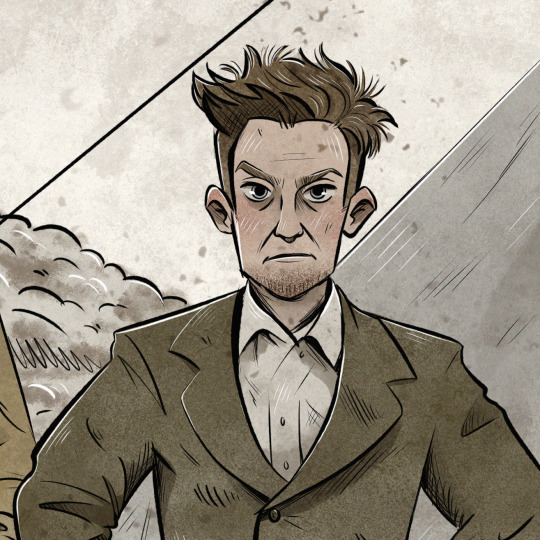
Mallory and Irvine
The discovery of what appears to be Andrew "Sandy" Irvine's (left) partial remains, 100 years after his and George Mallory's (right) disappearance on Everest, has been all I've been able to think about for the last couple of weeks so I just had to draw them.
They were last seen by a fellow climber on June 8, 1924, as they set off to hopefully become the first people to reach Everest's summit. Mallory was a seasoned Everest mountaineer, and Irvine was an engineering savant whose knowledge of how to use supplemental oxygen was essential to the expedition. After a snow squall hit, the two disappeared from sight and were never seen alive again.
Mallory's remains were found 75 years after his final climb, which revealed new clues as to what happened to the pair. They had apparently both suffered a fall, but much of their fate still remained a mystery.
But last month, at the time of me posting this, a team from National Geographic found a detached foot in a sock and boot. The sock had "A.C. Irvine" embroidered on it, leading researchers to believe it to be the partial remains of Irvine. While the rest of Irvine has yet to be found, it's the biggest lead in the mystery of their disappearance that we've had in decades, and it's just so exciting for Everest enthusiasts and especially for his family that a piece of him has finally been found!
#artists on tumblr#my art#procreate#digital art#illustration#art#caricature#mount everest#everest#george mallory#andrew irvine#sandy irvine#mountaineering#redraw#history#history lesson
12 notes
·
View notes
Text

El enigma de la ascensión al Everest de los británicos en 1924 sigue siendo un enigma. Allí perdieron la vida George Mallory (en la foto) y Andrew Irvine. Son los riesgos de la alta montaña. Y más aún en aquellas épocas. En cambio, se han convertido en una verdadera leyenda...
7 notes
·
View notes
Text
So has anyone written doomed yaoi rpf for George Mallory and Sandy Irvine or am I actually gonna have to do it?
I'm not joking btw
#this is bad#sound the alarms#kitten daddys having.... urges#its cus they found the fucking foot god dammit#hillspeaks#mountaineering#george mallory#sandy irvine
9 notes
·
View notes
Text
#LITCHRALLY ... wow#george mallory#sandy irvine#jimmy chin#everest#mountains#sagarmatha#chomolungma#1920s
6 notes
·
View notes
Text
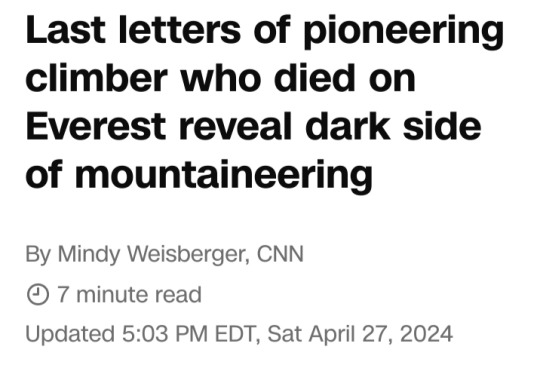
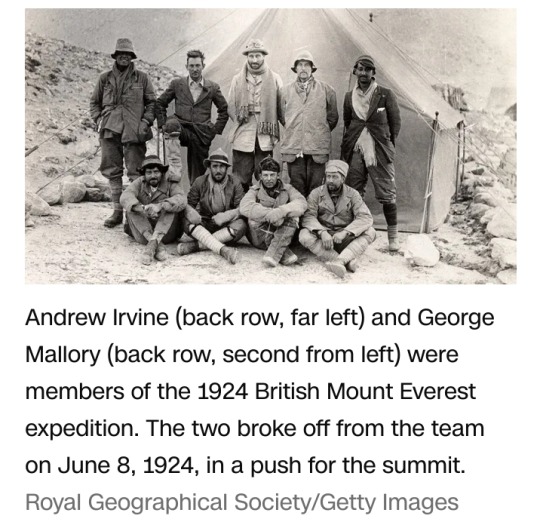
(CNN) — George Mallory is renowned for being one of the first British mountaineers to attempt to scale the dizzying heights of Mount Everest during the 1920s — until the mountain claimed his life.
Nearly a century later, newly digitized letters shed light on Mallory’s hopes and fears about ascending Everest, leading up to the last days before he disappeared while heading for its peak.
On 8 June 1924, Mallory and fellow climber Andrew Irvine departed from their expedition team in a push for the summit; they were never seen alive again.
Mallory’s words, however, are now available to read online in their entirety for the first time.
Magdalene College, Cambridge, where Mallory studied as an undergraduate from 1905 to 1908, recently digitized hundreds of pages of correspondence and other documents written and received by him.
Over the past 18 months, archivists scanned the documents in preparation for the centennial of Mallory’s disappearance.
The college will display a selection of Mallory’s letters and possessions in the exhibit “George Mallory: Magdalene to the Mountain,” opening June 20.
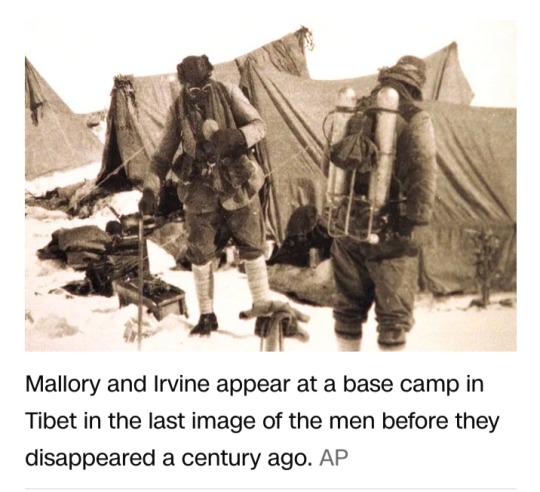
The Everest letters outline Mallory’s meticulous preparations and equipment tests, and his optimism about their prospects.
But the letters also show the darker side of mountaineering: bad weather, health issues, setbacks, and doubts.
Days before his disappearance, Mallory wrote that the odds were “50 to 1 against us” in the last letter to his wife Ruth dated 27 May 1924.
“This has been a bad time altogether,” Mallory wrote. “I look back on tremendous efforts & exhaustion & dismal looking out of a tent door and onto a world of snow & vanishing hopes.”
He went on to describe a harrowing brush with death during a recent climb, when the ground beneath his feet collapsed, leaving him suspended “half-blind & breathless.”
His weight supported only by his ice axe wedged across a crevasse as he dangled over “a very unpleasant black hole.”
Other letters Mallory exchanged with Ruth were written at the time of their courtship, while he was serving in Britain’s artillery regiment during World War I.
Throughout his travels, correspondence from Ruth provided him with much-needed stability during the most challenging times, said project lead Katy Green, a college archivist at Magdalene College.
“She was the ‘rock’ at home, he says himself in his letters,” Green said.
The archivist recounted one note in which Mallory told Ruth: “I’m so glad that you never wobble, because I would wobble without you.”
Yet while Mallory was clearly devoted to his wife, he nonetheless repeatedly returned to the Himalayas despite her mounting fears for his safety.
“There’s something in him that drove him,” Green said. “It might have been his wartime experience, or it might have just been the sort of person that he was.”
‘Documents of his character’
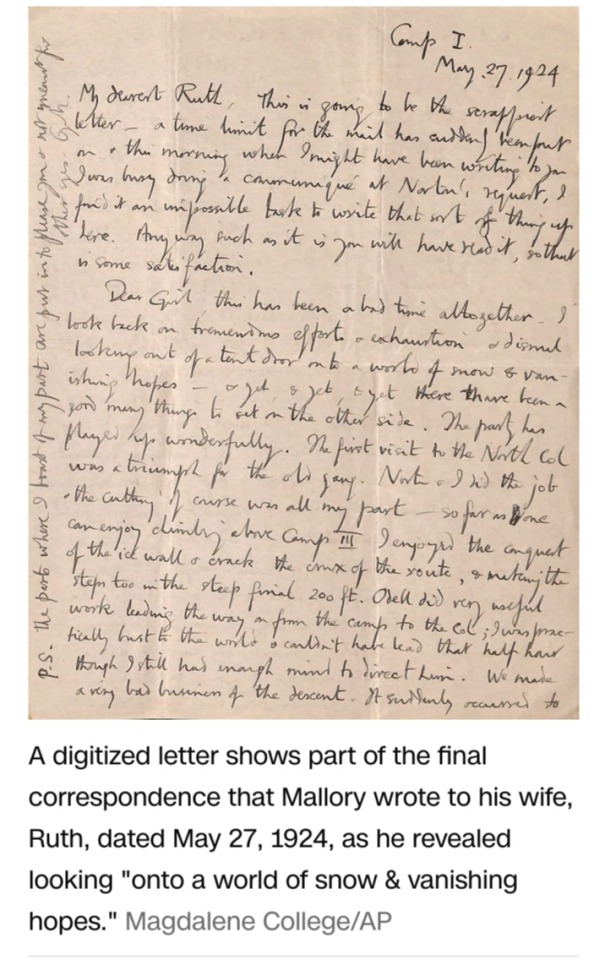
In total, the collection includes around 840 letters spanning from 1914 to 1924.
Ruth wrote about 440 of those to Mallory, offering an unprecedented and highly detailed view of daily life for women in the early 20th century, Green told CNN.
Together, the letters offer readers a rare glimpse of the man behind the legend, said Jochen Hemmleb, an author and alpinist who was part of the Everest expedition that found Mallory’s body in 1999.
“They are really personal. They are documents of his character. They provide unique insights into his life, and especially into the 1924 expedition — his state of mind, his accurate planning, his ambitions,” said Hemmleb, who was not involved in the scanning project.
“It’s such a treasure that these are now digitized and available for everyone to read.”
Frozen in place
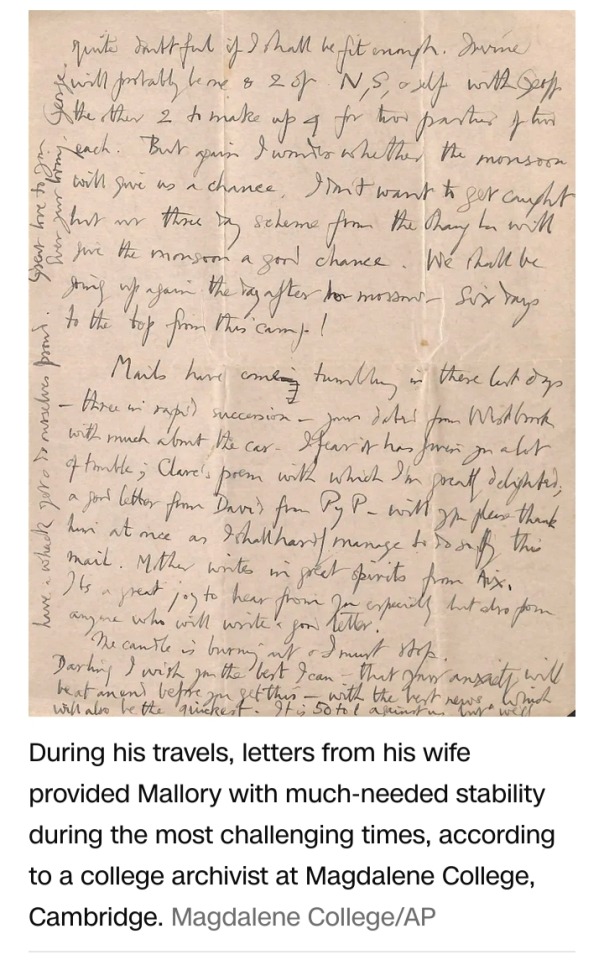
Three of the digitized letters — written to Mallory by his brother, his sister and a family friend — were recovered from Mallory’s body by the Mallory and Irvine Research Expedition, which ascended Everest seeking the remains of Mallory and Irvine.
On 1 May 1999, expedition member and mountaineer Conrad Anker found a frozen corpse at an altitude of around 26,700 feet (8,138 meters) and identified it as Mallory’s from a name tag that was sewn into his clothes.
Mallory’s body was interred where it lay at the family���s request, said Anker, who was not involved in the letter digitizing project.
“Having done body recoveries in other places, it’s very laborious, and it’s very dangerous at that altitude,” he told CNN.
“We collected some of his personal effects that went back to the Royal Geographical Society,” including the three letters that were later scanned at Magdalene College.
Mount Everest, the highest peak in the Himalayan mountain range, is also the tallest mountain on Earth, rising 29,035 feet (8,850 meters) above sea level on the border between Nepal and Tibet — an autonomous region in China.
Its Tibetan name is Chomolungma, meaning “Goddess Mother of the World,” and its Nepali name is Sagarmatha, meaning “Goddess of the Sky.”
However, these names were unknown to 19th-century British surveyors who mapped the region.
In 1865, the Royal Geographical Society named the peak Mount Everest after British surveyor Sir George Everest, a former surveyor general of India.
Mallory participated in all three of Britain’s first forays onto Everest’s slopes: in 1921, 1922 and 1924.
When he vanished in 1924, he was less than two weeks shy of his 38th birthday.
Many have speculated about whether Mallory and Irvine managed to reach Everest’s summit.
The climbers were last seen in the early afternoon of June 8 by expedition member and geologist Noel Odell, who was following behind and glimpsed them from a distance.
Odell later found some of their equipment at a campsite, but there was no trace of Mallory and Irvine.
“(Mallory) risked a lot despite the fact that he had a family back home and three small children,” Hemmleb said.
“We don’t know whether it was really irresponsible to make that final attempt, because we don’t really know what happened. It could be that in the end, he simply had bad luck.”
So close, yet so far

Decades after Mallory’s death, Sherpa Tenzing Norgay and New Zealand mountaineer Sir Edmund Hillary became the first to reach Everest’s peak, summiting on 29 May 1953.
In the years that followed, thousands attempted to climb Everest, with nearly 4,000 people reaching its summit.
More than 330 climbers have died trying since modern records were kept, according to the Himalayan Database, which compiles records of all expeditions in the Himalayas.
Some of those bodies remain on the mountain, frozen where they fell and visible to climbers who pass them by.
“If you’re out in this environment, you make peace with your own mortality and the deaths of others,” Anker said.
“You’re above 8,000 meters, and when there are weather changes or your own systems cease to function due to the lack of oxygen, it gets serious really quickly.”
When mountaineers are close to a mountain’s summit, they sometimes proceed even under dangerous conditions due to so-called summit fever, a compulsion to reach the peak even at the cost of their own safety.
It’s unknown whether Mallory was in the grip of summit fever when he died, but he might have thought that his reputation depended on summiting.
“That was going to be the defining moment in his life,” Anker said.
By comparison, Mallory’s team member Edward Norton had attempted to summit four days earlier but turned back at roughly the same altitude where Mallory and Irvine were seen for the last time.
“I had a conversation with one of Edward Norton’s sons a couple of years ago,” Hemmleb said.
“When I asked him, do you think it was mere luck that your father survived and Mallory died?"
He said, ‘No, I think there was one difference: My father, Edward Norton, didn’t need the mountain.’”
As a climber himself, Hemmleb took that message to heart.
“That is something I personally learned from Mallory,” he said. “You need to be very careful not to make yourself dependent on that summit success.”
A century has elapsed since Mallory’s death, but the digitizing of these letters assures that his story will keep being told, Hemmleb said.
“This will continue beyond my own lifetime, I’m certain of that,” he added. “In a sense, it’s the expedition that never ends.”
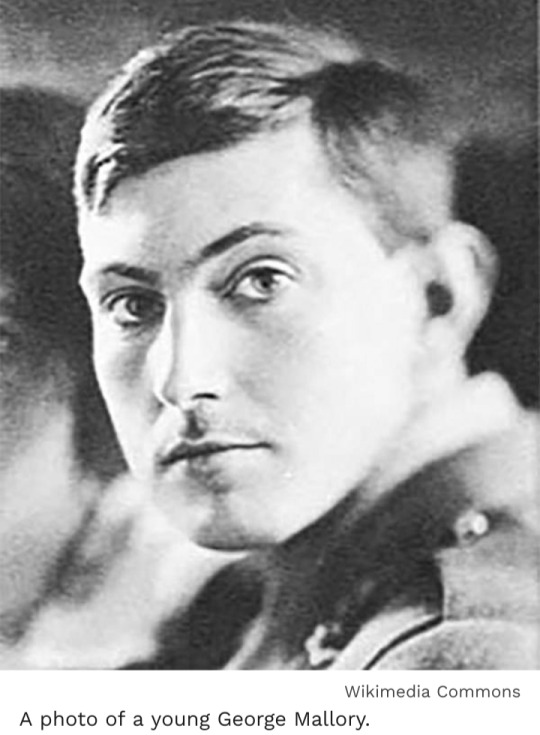
George Herbert Leigh-Mallory (18 June 1886 – 8 or 9 June 1924) was an English mountaineer who participated in the first three British Mount Everest expeditions from the early to mid-1920s.
#George Herbert Leigh-Mallory#George Mallory#Andrew Irvine#Mount Everest#Magdalene College#Cambridge#George Mallory: Magdalene to the Mountain#Himalayas#1924 British Mount Everest Expedition#Mallory and Irvine Research Expedition#Royal Geographical Society#Chomolungma#Sagarmatha#Sir George Everest#Nepal#Tibet#Sherpa Tenzing Norgay#Sir Edmund Hillary#Himalayan Database#expedition#summit fever#Everest letters#digitized letters#mountain climbing#1900s#20th century
10 notes
·
View notes
Text
Hey if you're the type to care about stuff like this a Nat Geo expedition found uh, some of Sandy Irvine (No camera found yet.)
6 notes
·
View notes
Text
I'm adding George Mallory and Andrew Irvine to my little satchel of "Frozen Perished English Explorers" because I never met a Briton who perished on an expedition to a frozen climate with extreme conditions while utilizing newfangled technologies that I couldn't make my Special Little Guy™️.
8 notes
·
View notes
Text
Remains of famous climber who disappeared century ago found on Mount Everest
National Geographic reported that a documentary film team discovered human remains on Mount Everest, apparently belonging to a man who went missing while attempting to summit the peak 100 years ago, according to CBS News.
Climate change is thinning the snow and ice around the Himalayas, increasingly exposing the bodies of other climbers. Briton Andrew Irvine went missing in 1924 along with climbing partner George Mallory as the pair attempted to first reach the summit of Mount Everest, 8,848 metres (2,929 feet) above sea level.
Mallory’s body was found in 1999, but clues about Irvine’s fate were unclear until a National Geographic team discovered a boot on the peak’s Central Rongbuk Glacier. Upon closer inspection, they found a sock with “a red label that has A.C. IRVINE stitched into it.”
The find could provide further evidence of the whereabouts of the team’s personal belongings and help solve one of mountaineering’s biggest mysteries: whether Irvine and Mallory made it to the summit. If confirmed, they could become the first to successfully climb the peak, almost three decades before the first currently recognised summit in 1953 by climbers Edmund Hillary and Tenzing Norgay.
More than 300 people have died on the mountain since expeditions began in the 1920s. Some of them are buried in snow or trapped in deep crevasses. In June, five frozen bodies were retrieved from Everest as part of Nepal’s campaign to clean up Mount Everest and the neighbouring peaks of Lhotse and Nuptse
Read more HERE

#world news#news#world politics#mount everest#national geographic#andrew irvine#irvine#george mallory
3 notes
·
View notes
Text

holy fuck they found Sandy Irvine!!!!
#i think i’m gonna start everest-posting#this is def my weirdest hyperfixation#sandy irvine#mount everest#holy shit#george mallory
5 notes
·
View notes
Text
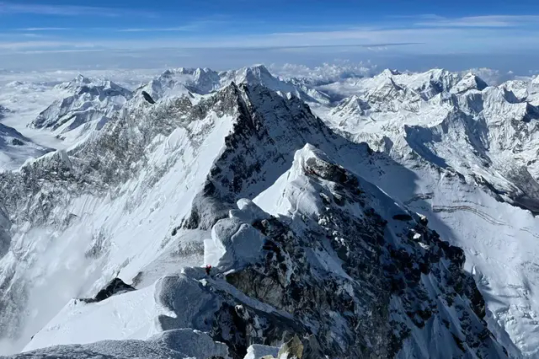
100 Years Ago They Disappeared on Everest. But Did They Make it to the Summit?
It’s one of climbing’s greatest mysteries: was Everest really conquered for the first time in 1953, or did two mountaineers make it to the summit in 1924, before dying in mysterious circumstances?
British climbers George Mallory and Andrew “Sandy” Irvine were last seen on June 8, 1924, 800 feet below the peak, before disappearing into clouds. They never reemerged.
When Mallory’s body was found in 1999, hopes were high that it might give a clue as to whether the pair reached the summit. But, tantalizingly, the camera he had been carrying – with which he would have documented the highest point they had reached – was not on the body. Irvine’s body has never been found.
But now, as the 100th anniversary of the mens’ disappearance approaches, one researcher believes that he has solved mountaineering’s greatest mystery.
By studying the expedition weather reports, author Graham Hoyland believes that he has worked out what happened to the pair – and whether they made it to the summit before they died.
Hoyland – a distant relative of another member of the expedition group, who has visited on Everest nine times searching for the remains – believes that the key to the mystery is air pressure.
His relative several times removed, Howard Somervell – another mountaineer, who had got within 1,000 feet of the summit on the same expedition before a lack of oxygen meant he had to retreat – was responsible for tracking the weather during the expedition.
The smoking gun?

The 1924 expedition, including Irvine and Mallory (top two left), aimed to be the first documented ascent of the mountain.
His records – which he submitted after the official report on the 1924 expedition was made, having returned to his job as a surgeon in India – show that the barometric pressure dropped between the morning of June 8 and June 9 at base camp, where Somervell was taking the readings.
Somervell recorded the pressure in inches of mercury, dropping from 16.25 to 15.98. Hoyland believes that these figures equate to a 10 millibar drop in pressure. Weather-related deaths on Everest are generally associated with a drop in barometric pressure at the summit.
A decrease of just 4 millibars can trigger hypoxia; a 6 millibar drop was enough to cause the incident in 1996 in which 20 people were trapped on the mountain, eight of whom died. That story is recounted in writer Jon Krakauer’s book “Into Thin Air.” The bad weather angle was also explored in a 2010 paper by experts from the University of Toronto, led by G.W. Kent Moore.
“They were climbing into an absolute s***storm – not only a blizzard but a sort of snow bomb,” Hoyland told CNN. Hoyland has experienced “snow bombs” himself on Everest. “It’s terrifying – the temperature drops hugely, you’re gasping for breath. There are winds of 100 knots. One guy I know was blown off the mountain, and ended up further up the mountain,” he said.
Effectively, the drop in air pressure meant that the mountain suddenly became higher – around 650 feet higher, to be precise. Hoyland calls it “an invisible death trap.”
The pair – who were ascending along the northwest ridge – were already climbing against the odds. Mallory wrote in a letter to his wife that he put his chances of making the summit at 50 to one. Hoyland thinks it was more like 20 to one. But, he thinks, they would have had no idea what was about to hit them.
“Mallory had seen Norton and Somervell get to to within 1000 feet of the top on 4 June using no oxygen equipment; it would have seemed reasonable to assume that it was possible to reach the summit with the apparatus,” he writes in a forthcoming book.
“What he didn’t know was that the rapidly falling air pressure was effectively making the mountain even higher.
What’s more, the storm and blizzard wouldn’t just have made a drop in air pressure. The pair were wearing layers of silk, cotton and wool. Hoyland – who had a similar made-to-measure outfit on an Everest trip – says that the clothes are exceptionally comfortable but wouldn’t have provided the warmth to survive a blizzard or an overnight.
Previously, it has been speculated that the pair had reached the summit before dying on the way down, something that Hoyland calls “wishful thinking.”
“I’d been trying to prove that Mallory had climbed Everest for years and years – I wanted to prove that I was the 16th Briton to climb it, not the 15th. But unfortunately when you read facts and they’re different, you have to change your mind. You can’t carry on being a wishful thinker,” he says.
Until Hoyland, nobody had closely studied at the weather reports, which were held at the Royal Geographical Society in London.
The summit was eventually reached by Edmund Hillary, a New Zealand mountaineer, in 1953 – the first documented ascent of the peak.
A century of speculation:


The mystery of Mallory and Irvine has intrigued adventurers for decades.
In 1933, another mountaineer, Percy Wyn-Harris found an ax near the summit. It was assumed to have belonged to Irvine.
In 1936, another mountaineer, Frank Smythe, believed he had seen two bodies in the distance. Using a telescope, he saw them at around 8,100 meters, or 26,575 feet.
And Chinese mountaineer Wang Hongbao believed he saw a body during his 1975 ascent.
Finally, an expedition in 1999, instigated by Hoyland, found Mallory’s body at 26,700 feet –2,335 below the summit.
Hoyland believes that the pair, tethered to each other, slipped while aborting the climb and returning to base camp. He thinks Mallory survived the initial fall, but took another, fatal plunge while staggering back to base camp. Irvine’s body has never been found.
Everest ‘Makes People Mad’:




While some of Mallory’s possessions were still to be found on his body, including a pair of goggles in his pocket – which suggests he was either in darkness or poor visibility – there was no sign of the photo of his wife which he had brought, planning to leave it on the summit.
For decades, researchers have posited that, in lieu of more precise evidence, the lack of photo suggests the pair might have reached the summit and fallen while returning.
However, having reviewed the new evidence, Hoyland believes this is not the case. Expedition reports noted a blizzard hitting the mountain at 2 p.m., he says – long before they could have reached the summit. The lack of photo, he thinks, means nothing. Mallory often forgot stuff, he notes.
In his last letter to his wife – digitized to mark the centenary of his ascent – on May 27, Mallory wrote of “looking out of a tent door onto a world of snow and vanishing hopes: and described it as “a bad time altogether.” Both he and Irvine were unwell, and he wrote that “I’m quite doubtful if I shall be fit enough.”
For Hoyland, who is taking part in an event at the Royal Geographical Society about the centenary, “Everest makes people mad.”
“Mallory became obsessed with the desire to conquer Everest – it would have made him somebody,” he said.
Mallory was a teacher, but moved on the fringes of the Bloomsbury set, a group of British intellectuals, artists and thinkers centered on London in the early 20th century.
“Everyone he knew was a famous novelist or a Nobel prizewinner, and he got captivated by it [the idea of Everest],” he said.
“There’s a dangerous thing called ‘summit fever’ – you see the summit, and you think, ‘Right, it’s death or glory.’ You don’t care if you die.
“I know that feeling. You get completely possessed by this mountain. Mallory was possessed by Everest and it killed him.”
Hoyland, who has since swapped mountaineering for extreme sailing, says that Everest has become “a non-mountaineer’s mountain.”
“There are rich men climbing it as a trophy. I wish it wasn’t the highest,” he said.
“Quite honestly I think the best thing to happen would be if the top 800 feet fell off.
By Julia Buckley.


#100 Years Ago They Disappeared on Everest#George Mallory#Andrew “Sandy” Irvine#Mount Everest#mountaineer#mountain climbing#1924 British Everest Expedition#history#history news#long post#long reads
56 notes
·
View notes
